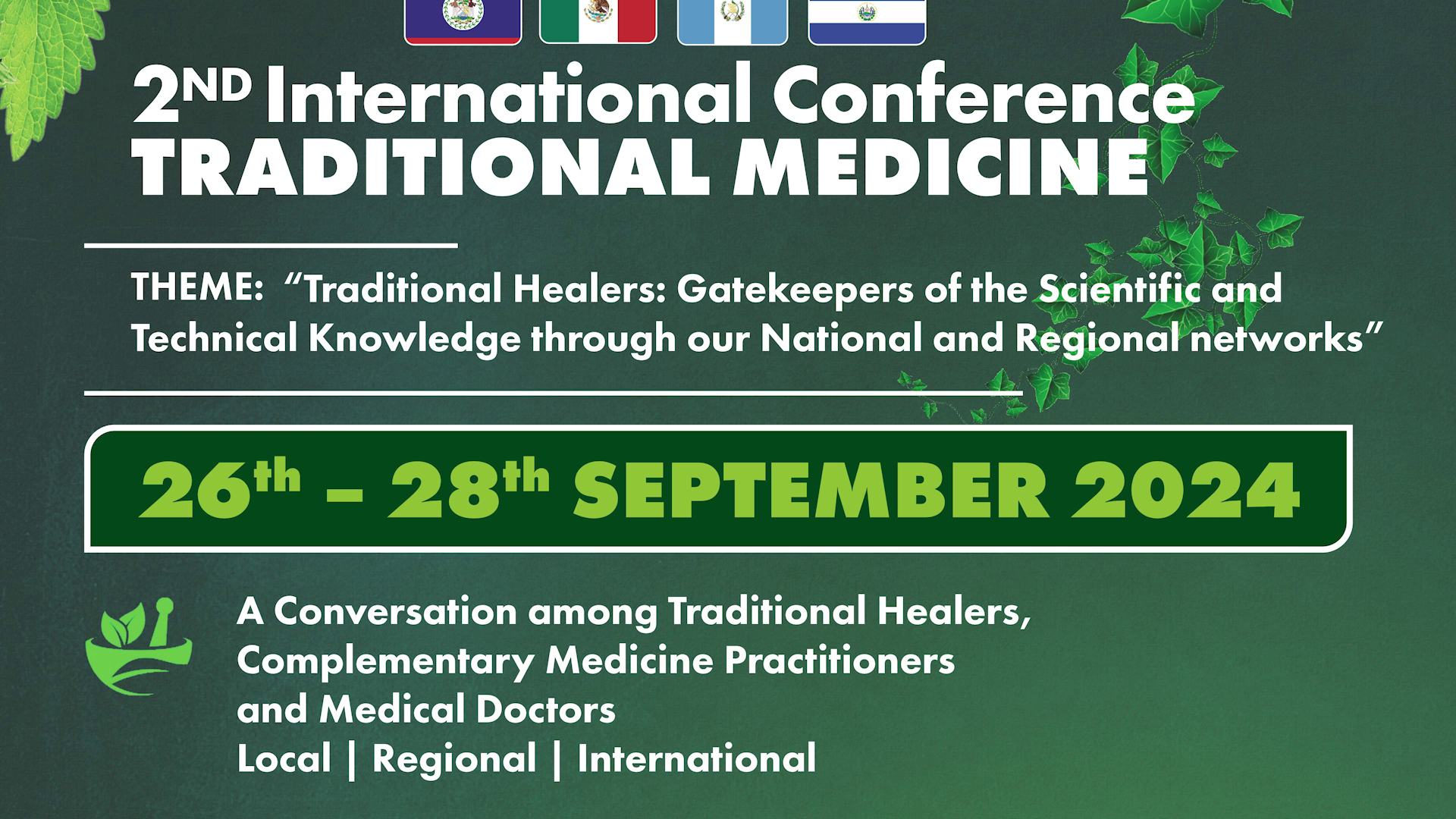Britney Gordon, Reporting
If you grew up in Belize, you may recall having to drink serosi or bitters as a child. Believed to be a natural way to keep healthy, herbal healing or bush medicine, has been a practice in many cultures for centuries. However, with the advancement of technology and modern medicine, fewer people are learning the traditional ways of healing. That is why stakeholders from across the region are gathered to participate in the second International Conference of Traditional Medicine.
Hugo Carillo, Director, U Chan Muul Yaax K’aax
“We have traditional healers which will be the keepers, and we have medical doctors, nurses. So we have to see both sides, and the importance of it, as the team sees traditional healers, keepers of scientific and technical knowledge, and on our behalf of the Yucatec Maya culture there is a lot of traditional medicine, a lot of traditional beliefs that we share also with our culture, with other cultures.”
Museum Director, Hugo Carillo, presented on traditional Mayan healing systems explaining how to track the body’s natural functions with the moon. He hopes that younger audiences will continue the traditions of his heritage through his work at the museum and conferences such as these.
“And for example, the crew on Garifuna. So we’re bounded. As I mentioned in my presentation, we’re a big family and I think it’s very important to keep the traditional medicine and positive, especially to the youth because time is going a lot of difference, deforestation, climate change and technology. So we must instill that to the younger generation. And we are losing our elders and that is one of the main objectives of the museum to transmit these knowledge to the younger generation and to the Belizean people as a whole.”
The conference is supported by the National Institute of Culture and History which is committed to preserving culture and traditional practices. Director of the Institute for Social and Cultural Research, Rolando Cocom, explained this goal.
Rolando Cocom, Director, ISCR
“The purpose of the conference is to have a conversation between traditional and complementary medical practitioners and formerly certified medical doctors within the healthcare system. It is an important conversation because as we know, most Belizeans in some way or another at some point in their life. The Belizean people have would have used herbs, for instance, to treat an ailment or to treat a disease. And we believe that the both the thermal health care system and the traditional practices should complement one another. There should be linkages. And it’s a conversation that has been happening for years now.”
The conference focuses on traditional medicinal practices but welcomes medical doctors into the conversation. We asked general physician Danny Yacob how balance is maintained between the two.
Dr. Danny Yacob, General Physician
“How do we keep that balance with the traditional medicine? We don’t only focus on the scientific and the medical part. We always try to include the herbal part of it. Because medicine in a whole, it’s a holistic approach. It’s an approach centered not just on medication, but you also have to teach the patients what they have to eat. They have to exercise natural things that they can do at home so that they continue with their health, not only when they come in the office to see us, but also when they’re at home, they know exactly what to do.”
The event highlights topics such as at-home healing, healthy dieting practices, and herbal approaches to mental health treatment. Doctor Maria Lucia Goncalves, a committee member of the conference, emphasized that these teachings must not be overlooked in the medical field. But rather studied, so that doctors can work with patients to determine the best treatment for them.
Dr. Maria Lucia Goncalves, Committee Member
“That is a great opportunity for all the doctors in Belize, for all the people in Belize because everybody have a traditional medication home. You have the abuelita, the grandmother, grandfather, natural healers who tell the neighbors who give you some medication. Sometimes we take a different approach, in a negative way, like during the delivery, the labor delivery patient come in with a tea. And they have complicated the delivery because maybe they take the tea so early. Let’s see what is happening. The agency section sometime necessary, but I don’t take this approach as a negative approach, but we have to be a part of research. We have to know what you take for us to be able to help you medically”
Britney Gordon for News Five.
